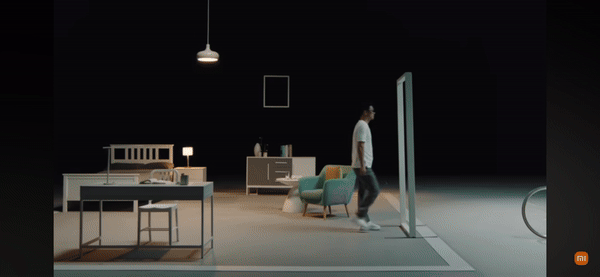top of page
XIAOMI
AR Glasses
UX / Product Design
Product and user interaction design for a lifestyle AR Glasses built from 0 to 1.

While most AR glasses are centered around gaming, these AR glasses are designed to enhance everyday living, seamlessly integrating into work, home, and commute settings for greater productivity and convenience.
Learn more about the project at the end.





A lifestyle AR product should be portable, light-weight, easy to navigate, and have a daily and classic look.
Learn more about the project at the end.



The team designed touch pads on both sides of the frame, with one side controlling the screen and the other managing sound.
Learn more about the project at the end.



Designers met with software engineers to explore lens transparency and motion frame rate before getting into UI design. The team visited R&D factories to learn about mechanical constraints.
Learn more about the project at the end.




The product was developed in a remarkably short period, with the demo released in just two months, garnering 4.5 million views on YouTube.
Learn more about the project at the end.










1/1
As AI tools emerged in 2021 and 2022, I began to envision a future of AR glasses design with AI integration.

Project Story &
My Contribution
Xiaomi is a leading electronics company which has 300 million active users worldwide. Xiaomi's smart wearables team, creates affordable smart fitness portable devices for young adults. We sought to provide versatile tools within a sleek, portable frame. Designed for seamless integration at work, home, and during commutes, this light weight device enhance productivity.
As a UX designer, I collaborated with product designers and industrial designers to figure out how should this product looks like. I analyzed multiple competitor products and came up with an identical market position. We came to an agreement that it should be portable, light-weighted, and have a classic look.
I also participated in the hardware design process in designing the control panel. The glasses feature light, portable touch pads on the frame, with one side controlling the screen and the other managing sound. I designed 10 hand gestures for seamless navigation. This intuitive design is very light when worn and easy to use, prioritizing essential commands and hand gestures for natural navigation.
Collaborated with hardware engineers, testing out touch sensitive gestures in prototype product. Met with software engineers and exploring lens transparency and motion frame rate before getting into UI design. Visited R&D factories and learned about how each hardware parts come together.
I designed the layer structures, screen navigation rules, and motion movements. The UI draft showcasing essential functions such as calling, navigation, notifications, and music playback with smooth motion.
Xiaomi's first glasses project, launched in 2021, was developed in a remarkably short period, with the demo released in just two months, garnering 4.5 million views on YouTube. This groundwork led to the Xiaomi Glasses Discovery Edition in 2023, which generated $718,000 in pre-sold revenue within two weeks.
As AI tools emerged in 2021 and 2022, I began envisioning a future UI design with AI integration. This concept aims to transform the glasses into a smart, seamless product that could potentially replace phones and laptops, offering an unparalleled user experience.
Employer
Xiaomi
Discipline
Product Design
Tools
Figma
After Effects
Adobe Premiere
Office
Beijing
Project Team
Yan He
Lei Xu
Wei Chen
Xuewei Tsui
Xiaoxiao Huang
Julia Du
XIAOMI
Watch S1 Pro
UX / Product Design
User experience design and UI enhancements for health Apps on smart watch for global tech brand.
bottom of page